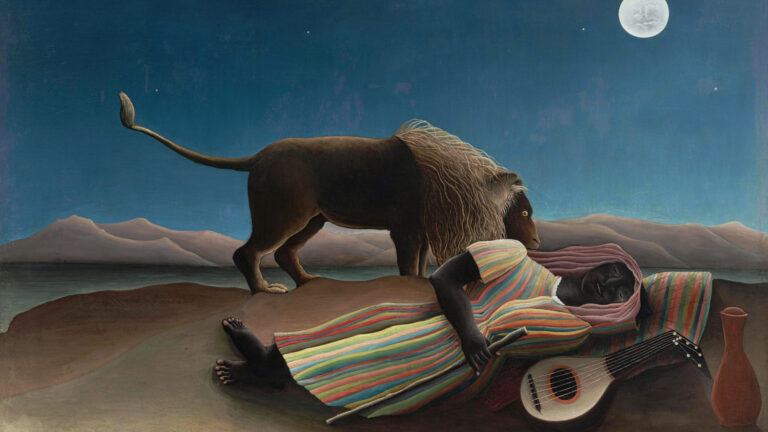
Henri Rousseau’s “The Sleeping Gypsy” is a stunning example of a masterpiece that not only captivates the viewer with its beauty but also invites deeper interpretation through its symbolic elements. Painted in 1897, this oil painting depicts a sleeping woman lying in the desert landscape while a lion leans over her. Let’s explore the various symbols in the painting and their significance.
The desert landscape in the painting symbolizes the vastness and emptiness of the world, evoking a sense of isolation and danger. The woman’s vulnerability is emphasized by her exposure in such a barren environment, making her appear defenseless against any harm that may befall her. This creates a sense of tension and uncertainty, as viewers are left wondering what will happen to her in this precarious situation.
The sleeping woman is a representation of the subconscious mind and its vulnerability during sleep. Her closed eyes and relaxed posture suggest that she is in a deep state of relaxation, allowing her subconscious mind to take over. Her vulnerability in this state of sleep is emphasized by the dangerous surroundings, which could easily overwhelm her.
The lion in the painting is one of the most significant symbols. It is a representation of strength and power, but also danger and potential harm. The lion’s proximity to the sleeping woman creates tension and suggests that he may harm her. However, the lion’s pose suggests that it is also in a state of relaxation, mirroring the woman’s sleeping posture. This could symbolize the idea that even the most powerful creatures have moments of vulnerability.
Overall, Henri Rousseau’s “The Sleeping Gypsy” is a beautiful example of how symbolism can be used to create a deeper meaning and interpretation of a painting. The painting invites viewers to reflect on the vulnerability of the subconscious mind, the isolation and danger of the world, and the power and potential harm of even the strongest creatures.
In conclusion, “The Sleeping Gypsy” is a masterpiece that continues to captivate and intrigue viewers over a century after its creation. By exploring the symbolism in the painting, we can gain a deeper appreciation for its meaning and significance.


